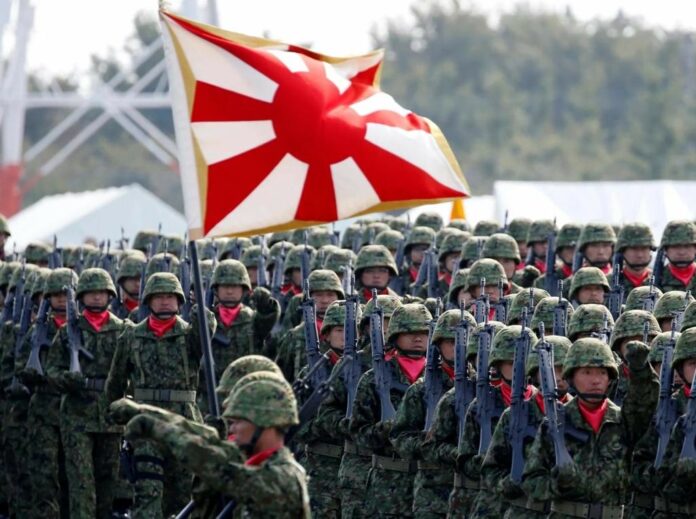Ahmed Matar-researcher
In October 2022, Japan unveiled a new national security plan that refers to the largest arming of the Japanese army since World War II, doubling defense spending and deviating from the peaceful road entrenched in its constitution, in the face of increasing threats from regional adversaries, as well as the vagaries of the current international environment.
It is worth mentioning that the Japanese government has approved three security documents-the National Security Strategy (NSS), the National Defense Strategy, and the Defense Forces Development Plan-to strengthen Japan’s defense capabilities amid an unstable security environment.
The new measures include measures that will enable Japan to possess “counterattack capabilities”, the ability to directly attack the territory of another state in an emergency, and under specific conditions.
Earlier in December 2022, the Japanese Prime Minister instructed the ministers of Defense and finance to secure funds to increase the Japanese defense budget to (2%) of GDP by 2027, according to the Japanese Defense Minister; to become Japan’s third in terms of military spending in the world after the United States and China.
By adopting the new defense policy, Japan is abandoning the peaceful, defensive direction enshrined in its post-World War II constitution, which placed restrictions on its self-defense forces that they can only be used for what their name suggests, which is the defense of Japanese territory.
The new Japanese defense policy represents a revolution in Tokyo’s strategic directions, raising important questions about the timing, semantics, and implications of Tokyo’s change in its security and defense policy.
First: Timing
It should be noted that Japan issued the Defense manual document, or defense strategy for the first time in 2013, but the regional environment for Japan was not in the form that it has become now, especially in light of the tension in the Asia-Pacific, tensions in the south and East China Seas and the Taiwan Strait, as well as the war in Ukraine has shown that the phenomenon of invasion is still a possibility that countries must build their military capabilities to avoid it, which explains the difference in language and wording between the document issued in 2013 and those issued in 2022.
In the defense reform document, Japan describes one of these competitors (China) as its “greatest strategic challenge. Tokyo is closely monitoring China’s relentless efforts to develop its naval and air military capabilities in areas near Japan while claiming that the Senkaku Islands, which are under Japanese administration, are an uninhabited chain located in the East China Sea, and China claims its return, and its ships conduct frequent raids near the islands, which Beijing calls diahuu, while Japan defends with warplanes almost daily in response to the approach of Chinese aircraft to its airspace.
Meanwhile, China is intensifying its military pressure on Taiwan, the self-governing island, which the Japanese decision-maker classifies as vital to Japan’s national security. In August last year, as part of a pressure campaign on Taiwan, China launched five missiles that landed in Japan’s exclusive economic zone near Taiwan in response to the visit of US House Speaker Nancy Pelosi to Taipei, which reveals the fact that any conflict in the Taiwan Strait will involve Japan.











